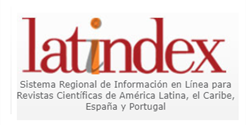EL ROL DEL DOCENTE EN EL DISEÑO DE ESTRATEGIAS DE LA ENSEÑANZA SIGNIFICATIVA DEL INGLÉS: UN CAMINO HACIA EL APRENDIZAJE PROFUNDO Y DURADERO.
DOI:
https://doi.org/10.56219/dialctica.v2i26.4683Keywords:
Enseñanza significativa, inglés como lengua extranjera, rol docente, aprendizaje profundo, diseño instruccional, estrategias pedagógicasAbstract
Here is the English translation of your text:
The intention of this article is to encourage reflection on the design of strategies for teaching English as a foreign language, which currently faces the challenge of moving beyond traditional approaches that have led students to memorize rules and acquire limited vocabulary. The goal is to foster meaningful learning that enables fluent mastery of the language. This essay, presented in a descriptive format with a documentary design, explores the role of the teacher as a facilitator of knowledge in the field. The teacher must design dynamic and didactic pedagogical strategies that support the integration of new knowledge with the student’s preexisting cognitive structure.
Therefore, the teacher’s role is analyzed as a promoter of dialogue, facilitator of communicative interaction, encourager of autonomy, and creator of institutional environments conducive to successfully developing their pedagogical practice. In conclusion, meaningful and lasting English language teaching involves mastering linguistic skills. Thus, a pedagogical approach focused on the intentional design of strategies by the teacher is essential to cultivate in students the construction of their own knowledge—encouraging them to reflect and recognize that education is not an obligation but a life opportunity. Mastery of English opens the door to the globalized and interconnected world enabled by technological advances. Consequently, the use of contemporary paradigms helps create environments that promote meaningful learning among the student population.
Downloads
References
Arguedas, A. (2010). Involucramiento de las estudiantes y los estudiantes en el proceso educativo. Revista REICE, 8(1), 63-78. https://www.redalyc.org/pdf/551/55113489005.pdf.
Arias, J., Suárez, E., Caballero, R., Sagó, A., y Rodríguez, V. (2010). Función del profesor en la enseñanza del inglés en las carreras médicas. Revista Información Científica, 67(3). https://www.redalyc.org/pdf/5517/551757303024.pdf.
Ausubel, D. (1968). Psicología educativa. Una visión cognitiva. Nueva York: Holt, Rinehart y Winston, Inc. Trillas - México. https://bibliotecadigital.uchile.cl/permalink/56UDC_INST/f0q9dr/alma991004014699703936.
Barturén, N. (2019). El aprendizaje basado en tareas como método para desarrollar la expresión oral en estudiantes de inglés de un instituto superior tecnológico de lima. (Tesis para Maestría, Universidad Peruana Cayetano Heredia Escuela de Postgrado. – Perú). https://repositorio.upch.edu.pe/bitstream/handle/20.500.12866/5958/Aprendizaje_BarturenSilva_Nancy.pdf.
Brown, H. (2007). Principios de Aprendizaje y Enseñanza de Idiomas. Revista: Scientifi Research, 15(2). https://doi.10.4236/ce.2024.152014.
Cifuentes, M., Beltrán Moreno, M, y Vasconez, P. (2024). La importancia del uso del idioma inglés en la industria hotelera y turística. Revista InveCom, 4(2). https://doi.org/10.5281/zenodo.10558680
Crystal, D. (2003). English as a global languag. RevistaPer Linguam, 20(1), 57-59. https://doi.org/10.5785/20-1-80.
Martínez, A. (2022). Uso del método comunicativo en la enseñanza del idioma English como lengua extranjera. (Tesis para Maestría en Lingüística aplicada, Universidad Autónoma de Santo Domingo – República Dominicana). DOI: 10.13140/RG.2.2.27958.10563
Palfreyman, D. (2020). El Discurso de la Autonomía de Holecés y el Aprendizaje de Lenguas Extranjeras. (1ed). Routledge – EEUU. https://www.researchgate.net/publication/342322663_The_Discourse_of_Holec%27s_Autonomy_and_Foreign_Language_Learning.
Quevedo, S. y Huamani, L. (2024). Estrategias de enseñanza aprendizaje en inglés empleadas en estudiantes de educación inicial. Cienciamatria. Revista Interdisciplinaria de Humanidades, Educación, Ciencia y Tecnología, 10(18), 184-200. https://doi.org/10.35381/cm.v10i18.1260.
Richards, J. y Rodgers, T. (2014). Aproximaciones y métodos en la enseñanza de la lengua. Revista: Scientifi Research, 12(3). https://doi.org/10.1017/9781009024532.
Downloads
Published
How to Cite
Issue
Section
License

This work is licensed under a Creative Commons Attribution-NonCommercial-ShareAlike 4.0 International License.
La revista Dialéctica conserva los derechos patrimoniales (copyright) de las obras publicadas, que favorece y permite la reutilización de los mismos bajo la licencia Creative Commons Atribución-NoComercial-CompartirIgual 4.0 , por lo cual se pueden copiar, usar, difundir, transmitir y exponer públicamente, siempre que se cite la autoría y fuente original de su publicación (revista, editorial, URL y DOI de la obra), no se usen para fines comerciales u onerosos y se mencione la existencia y especificaciones de esta licencia de uso. Si remezcla, transforma o crea a partir del material, debe distribuir su contribución bajo la misma licencia del original.











